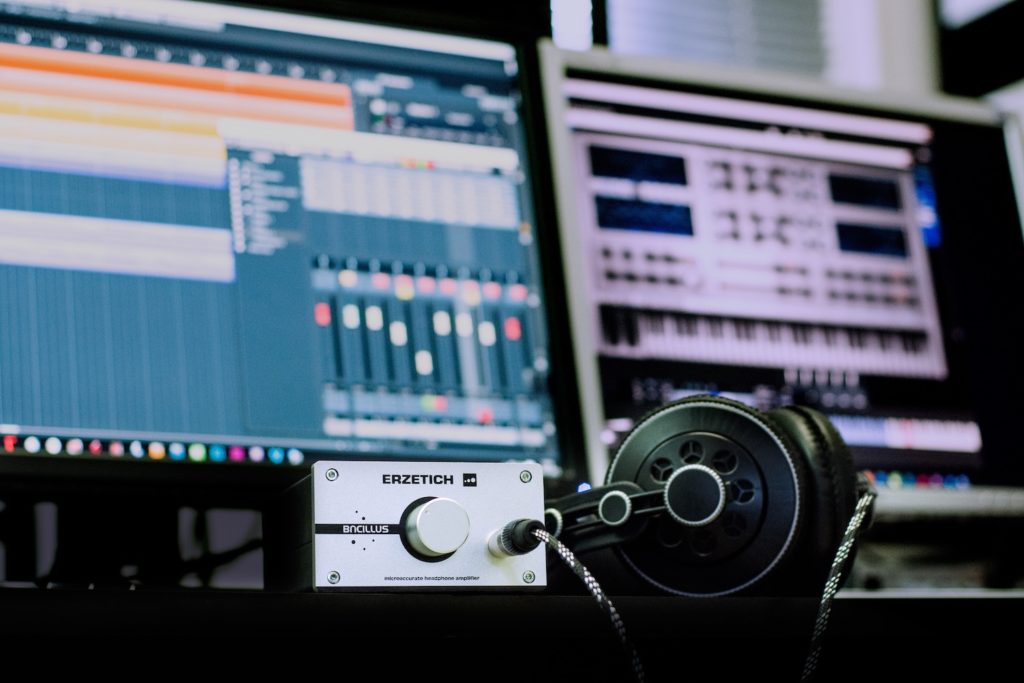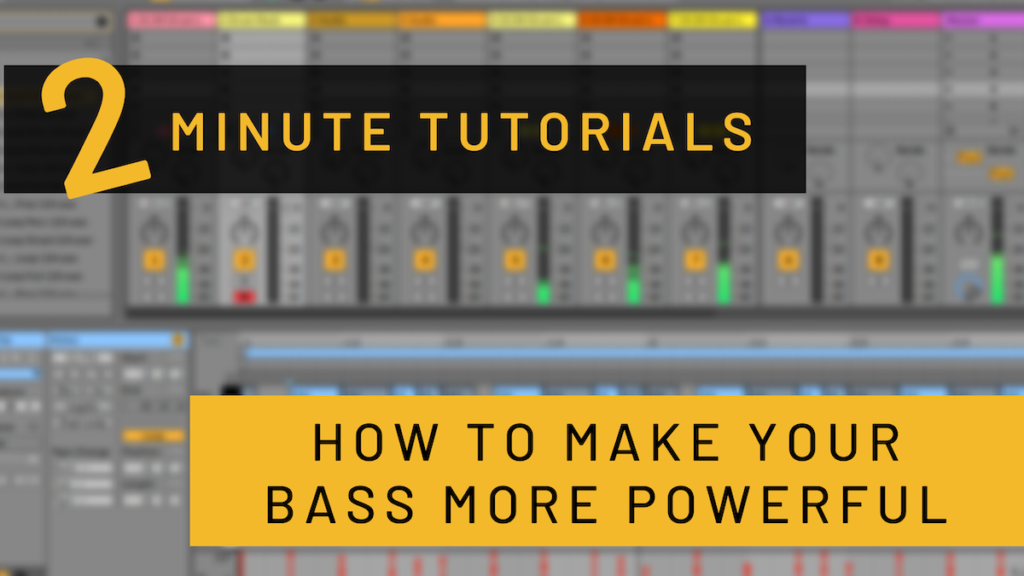As music producers, a lot of our learning is through trial and error and practice. We get better at creating music through this trial and error and by putting in the hours to learn and improve. But sometimes we’re making mistakes with our music production and repeating them over and over. We might not even know we are making these mistakes, let alone repeating them. If we don’t know the mistakes we are making, how can we learn from them and improve our craft?
In this article, I’ve chosen seven common mistakes in electronic music production that are easily avoidable. By overcoming these mistakes, you can instantly improve your production process.
1. Mistake: Boosting Too Much
When we are writing a track, sometimes there is a certain section we want to stand out. So we generally tend to use the EQ to boost the preferred frequencies to make that part stand out from the other sounds. But this can cause issues in your mix. When you’re boosting frequencies, you’re pushing the volume of certain frequencies. This can lead to less headroom in your mix, as well as putting too much emphasis on certain areas of sound. If we’re boosting these frequencies, and other instruments also have similar frequencies, your boosted signal is now going to be overpowering the other sounds that are also trying to compete for those signals.
Solution: Create Room First
Instead of greatly boosting a signal, try creating room in your mix for the specific sounds you want to stand out. Reduce the signal of areas in other instruments that are competing for those frequencies. For example, if you have a kick drum occupying a large amount of signal at 500hz, and you want your snare to punch through at 500hz, you could cut out a bit of the 500hz of your kick drum to make room for that snare, or vice versa. Making room for the separate instruments will help reduce muddiness and increase clarity by giving each instrument its own space. Only a few DB of cutting/boosting will likely be enough to give room to the separate instruments, but each situation is different. Always use your ears!
2. Mistake: Compressing Too Much
If you ask producers how to make sounds louder, a lot of the time they are going to tell you to use ‘compression’. Now, this may be true, but what a lot of newer producers don’t know is how to compress PROPERLY. Sometimes compression is subtle, and as a newer producer, you may not realize the compression that is actually happening with a compressor is more than you need. Therefore, you end up over-compressing your sounds.
Solution: Learn how to Compress Properly
Learning how to compress properly is essential in increasing the quality of your mixes. However, while compression is a simple concept to grasp, it is difficult to master. Learning how to master compression is something that will come with time and practice. In the meantime, I’ve put together a quick tutorial to learn what compression is, and how it works below.
3. Mistake: Not Learning Basic Music Theory
This is a very common mistake that a lot of new (and experienced) producers make. Learning even basic music theory can open so many doors for you as a producer. Knowing musical theory can greatly increase your workflow productivity by eliminating the guesswork of choosing melodies, finding scales, notes, keys, etc.
Solution: Learn Some Theory!
Take a few hours and learn some basic music theory. There are tons of free resources available to you! Check out some videos on YouTube that can introduce you to theory as a complete beginner. There are some great videos that will teach you the basics in less than a few hours. You’ll be very thankful that you did! Once you learn some basic music theory, melodies will make more sense, chords will come more naturally, and keys will be easier to find and stay in. You will also notice your writing will become quicker (and likely, better!).
4. Mistake: Too Much Sidechain Compression
We all love sidechain compression for our kicks because it helps to really push our kick through the mix. Who doesn’t love a powerful kick just shining through? But the problem with this that can quickly become very audible is using too much sidechain. Unless you’re going for a Daft Punk vibe, too much sidechain compression can ruin your mix.
Solution: Use your ears, bro!
Seriously, when dialing in your sidechain compression you just have to dial your settings until the ‘ducking’ of the signal is almost inaudible. You don’t want to necessarily HEAR the sidechain, but you want to be able to notice the difference when turning it off. Start by slowly reducing your sidechain compressor settings until you can really hear the pumping effect. Then, slowly back off the compressor until you’re only reducing enough gain that you can barely hear the effects, but still enough that the kick is noticeably punching through the mix. Then adjust your attack times. Always make sure to A/B your compression, to make sure you’re not overdoing it or under-doing it. You shouldn’t be able to hear the sounds ‘throbbing’, but you should be able to hear a difference in your kicks’ prominence when turning on and off the compression.
5. Mistake: Lack of Layering
If you’re at a point in your production level where you are layering sounds, that’s great! But knowing when and what to layer is important. Not layering sounds can leave certain parts of your track sounding a bit less powerful or less full of weight. Without proper layering, your mix could sound a bit thin and not as powerful as you would like.
Solution: Layer Appropriately
If you have a section that is lacking a certain aspect of a sound, you can layer it up with a second sound to attenuate the initial sound or fill the area that is lacking. This can add many elements to otherwise single-layered and thin sounds.
For example, you have a bass synth that is really heavy and smooth in the low end, but you want some high end as well to really make it shine. You could add another bass synth on top of it, but in a higher octave that has a bit more of a distorted or saturated sound. Now your bass is not just smooth and low, but also saturated and high.
6. Mistake: Improper Layering
Now that we’ve established how layering is beneficial to your production, let’s look at how it can pose a threat to your mix if you’re not layering appropriately. Layering too many sounds can cause muddiness and too much frequency overlap. This can lead to issues when you are mixing your track. The layers can start to add up and will begin to sound messy.
Solution: Give your Sounds the Proper Seating Plan
Metaphorically speaking, of course. Giving your sounds a proper place to sit in the mix is crucial to achieving the highest level of clarity. EQ is critical in layering sounds. You need to carve out the frequencies of each sound to make space for both of them to come together to create one. This is something I teach more in-depth in my free music production course, “The Importance of Drums & How to be a Master at Them”, which you can grab here.
7. Mistake: Poor Sample Choice
I’ve chosen this as the last mistake because when the solution is implemented, it can be immediately beneficial to your music. However, it will take some time to practice and get just right. Essentially, picking samples that don’t fit your track can create a mess of perspective and a mix of quality. If you are choosing samples that are really aggressive and powerful but are writing a deep, slow, chill track, you’re going to cause a bit of confusion to the listener. The sounds are likely not going to blend well together. If you choose low-quality samples, your mix will never sound as good as it could with higher quality samples. Using high-quality samples can instantly boost the overall quality of your track.
Solution: Choose Samples That Fit your track (This comes with patience and practice)
Choosing proper samples isn’t something you’ll learn overnight. In the meantime, you can improve your sample choices by being patient while auditioning samples and really taking the time to listen to them. Instead of grabbing the first sample you find, take your time and pay close attention to the sounds you are choosing. Compare them to the professionals, and try to better understand what makes a sample work well or what makes it not work well with the songs you are writing.
I dive more into this as well in my free music production course. If you haven’t already, you can grab it here.
Conclusion
Learning electronic music production is tough, especially if you don’t know how to learn from your mistakes. If you were making any of the seven mistakes we discussed above, hopefully you can implement the solutions right away! Your tracks will start to sound better and your music will quality will improve.
If you liked this article, make sure to check out the rest of the blog to learn more. As always, you can book private lessons with me as well to ask any questions you have about music production, and gain invaluable experience to take your production to the next level.






